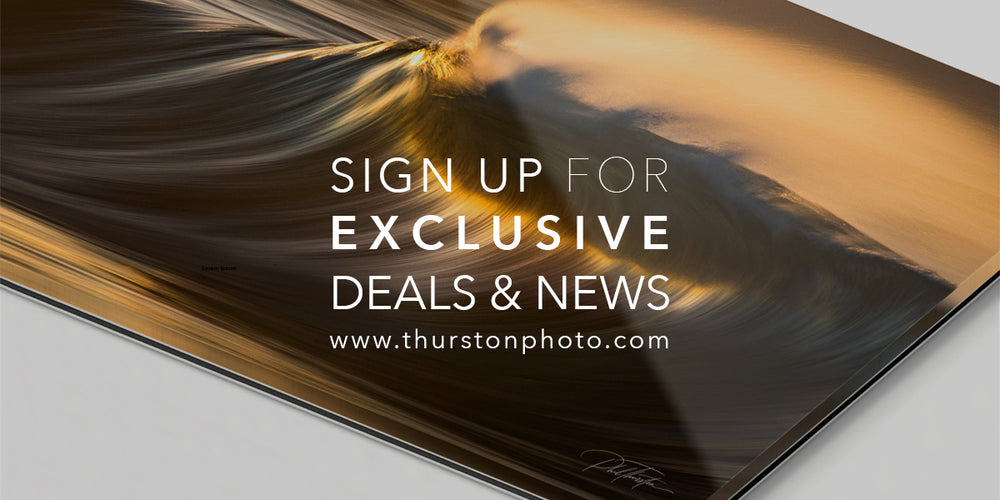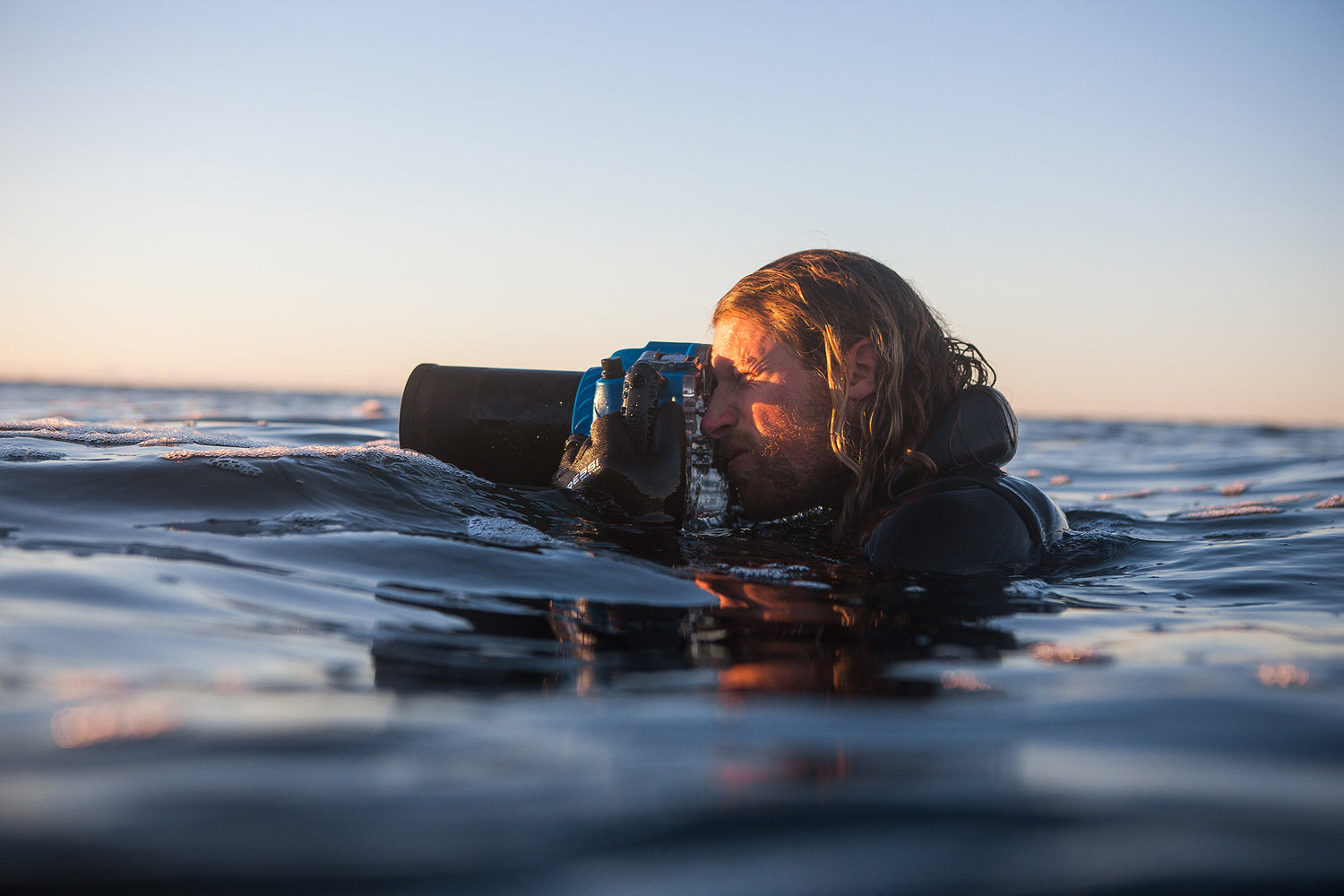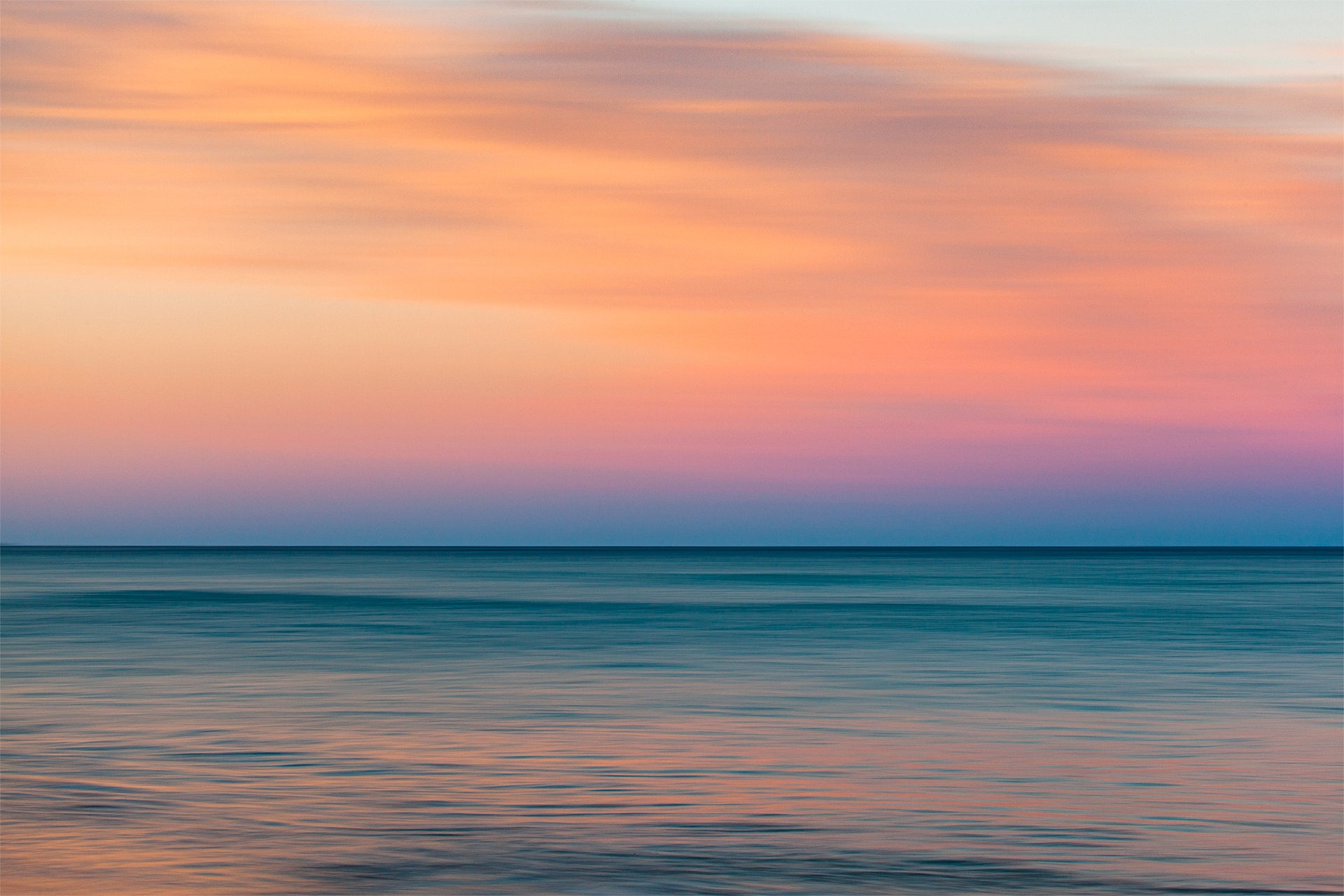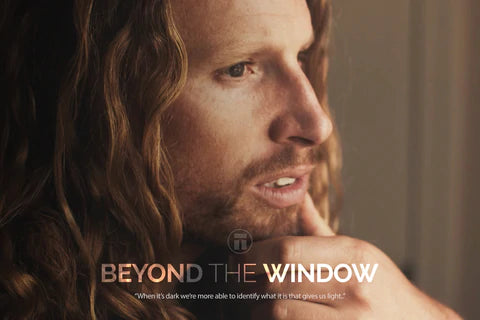Interview with The Epoch Times
I recently had the pleasure of being interviewed by the Epoch Times, whom wrote a great article on my photography entitled: CREATIVE WONDERS: Photographer’s Sublime Shots of Breaking Waves Depict His Faith After Epiphany at Sea. You can read the article on the Epoch Times site, or for those interested in reading more, you can find the full conversation below..
Epoch Times: Can you briefly introduce yourself: How old are you, where are you from, where do you live, what is your field of study and profession?
PT: Hi, I’m Phil Thurston, I’m 35 years old, and I’m from the South Coast of NSW, Australia. I’m currently living in Southern California with my wife, and travel between the Australia and the US. I’m a professional self taught photographer, specialising in fine art ocean photography for the past 10 years, particularly focusing on the beauty of the breaking wave.
What inspired you to learn photography? When did you start to gain knowledge in this field?
I grew up very close to the ocean in a small town with 2 older brothers, we basically lived at the beach and learnt to surf and gain confidence in and around the ocean at a very young age. I picked up my first camera in my early teens and the fascination of capturing the waves rather than riding them, gradually overcame me during my later teens and early twenties. I travelled around Australia and went to Hawaii in pursuit of a surfing career, and during that time I got the opportunity to see and experience so many breathtaking moments in the ocean, and I always knew that I had to somehow capture and translate these moments of energy and share them with people. My background of surfing, became the core confidence and ocean knowledge that is needed to get close enough to the waves and photograph them from a unique vantage point. Learning the technical aspects of operating the camera came naturally to me, and because being in the ocean had become second nature, I was able to fully focus on the camera settings and getting in position for the shot.
How long have you been working as a photographer?
I’ve been operating Thurston Photo professionally for about 10 years. I took on a lot of forms of making money with my camera while I was passionately building my portfolio of fine art images that people from all over the world now invest in through my portfolio site. I also self-published a fine art coffee table book and ran a number of educational workshops focusing on ocean photography. Becoming a fine art photographer has been a life long ambition and has required a very entrepreneurial set of skills, and I’ve had to take on a lot of other roles to make ends meet along the way, and still do from time to time.
Can you share with us why you chose surf photography as a way to express your art?
The ocean is such a special place, it’s really hard to describe the way I feel about it to someone, especially if they are unfamiliar with the ocean environment. The ocean creates things that are incredibly astonishing and last for just a fraction of time, so the average person may have never even seen or realised such a beauty even exists. It’s also those fractions of time, that make it so special too, often it’s the fleeting of a moment that makes it beautiful, and through photography and the camera technology of today, I am able to freeze that moment in time forever. Surf photography also kind of chose me too, my whole family and community of friends surfed and from that the ocean and surf culture was deeply embedded into my lifestyle growing up, so I became very attached to the waves. Being an artist at heart, and a very creative person, my personality wasn’t aggressive enough to pursue surfing competitively, and the idea of documenting what I saw out there became an almost inevitable direction for me.
Can you describe the technique you use to take these pictures? What kind of lens and camera do you use? Do you use any post-processing techniques?
When I get in the ocean, I’m shooting on a Canon 5D MKIV mostly, which is encased in an AquaTech housing; a waterproof case that allows full access to the controls. When I’m on land, I’m using a Manfrotto Tripod or Monopod with a longer lens to help me frame a unique perspective. Which lens I use depends on the shot I’m going after and the conditions on the day. I’ve used everything from an 8mm fisheye to 600mm of telephoto compression to capture waves, and at every focal length there is something unique to focus on. If the waves are a little bigger, It may make sense to find a good spot from land and use a Manfrotto tripod or monopod and grab the telephoto. If the waves are really perfect and the right size, then swimming around, and interacting with the light and movement of the waves with my camera in a housing can often yield the best results. Light responds differently at every angle though, and often in order to find that angle requires getting wet! When it comes to post processing, this is what can make or break an artists traction, and a good edit requires an extensive understanding of both light and colour, which comes from a lot of observation of these elements when you’re out in nature. For me, the post processing is all about exemplifying the emotion that I originally felt when I first saw the moment happen in the water, and massaging the image into a place where others can have that same wow effect and connect with that moment.
Can you share more about the use of texture, color, and light in your work?
When it comes to the ocean, the way it moves and interacts with light, there is absolutely no shortage of texture, and colour, in fact the combinations of these elements create an endlessly evolving subject to work with. In my workshops, I’d often emphasise the importance of “shooting the light” over shooting the subject, because you can have the most perfect wave in the world but if there’s no light hitting it, there’s nothing to see, so in this sense, light is everything and it’s the thing I’ll revolve around and prioritise when I’m out in the field. Of course, you need the wave too, in fact, a good moment consists of the alignment of many elemental factors, including, swell, wind, tide, and time that all move at different rates on their own timelines. On top of considering that, there’s also a lot of in-camera techniques that come into play, like aperture and shutter speed that can be used to manipulate texture, colour and light in the image. A lot of my signature images involve creatively slowing down the shutter speed to intentionally capture the movement of the water with the light. I personally call this style; Flomocean. A special image isn’t just the result of going to the beach and getting the settings right though, in fact behind every bestseller of mine is a lot of preparation, studying the forecasts and anticipating the conditions ahead of time so that I can be there, lens up, and ready for the moment when it happens. I should also add that behind every great image of mine is a lot of trial and error, when I come in from a session with a portfolio shot, it’s most certainly not the first attempt! However the process of shooting, editing, analysing, and repeating, develops an eye for seeing the art amongst the chaos of the ocean.
We are aware that you have incorporated faith in your art, can you share more about how faith has played a role in your life in general?
I didn’t grow up in the faith, my story is unique in that way, because my faith more so found me, and it found me at a very desperate point in my life when I was suddenly put in a very life-threatening situation while I was surfing. I was 17, on a trip to Hawaii at the time, one day when a big swell was on, i quickly realised my extremely fragile mortality, and I had a pivotal experience with God that literally changed every aspect of my life and direction. It’s a long story for another time but God, suddenly went from a somewhat fictional character in my life, to the sole reason I’m still alive today. So, my faith being incorporated in my art isn’t necessarily an intentional thing, it’s just at the very core of who I am and why I’m here, so it naturally intertwines itself with everything I do, especially anything creative that I do. Ever since that day, I’ve gravitated toward operating out of a place of revelation, understanding, that what I’m shooting and working with, is intentionally designed, and artistically woven together. I’ve observed since then, that there’s a melody to it all, a rhythm and irrefutable balance that often gets overlooked. People learn to see chaos, but if you look closer, maybe through a different lens, you realise it’s actually an orchestrated perfectly thought out design. Becoming a photographer has been an amazing way to marry my perspectives on life and spirituality together, because nature displays the majesty of God and sings His praises louder and bolder than anything I’ve ever seen, and all I have to do is recognise it.
In regards to the role that faith has played in my life, I’ve still had all the same struggles every adolescent does growing up in this world, perhaps more so with the absence of a constant father figure, but I’ve always had that faith encounter with God to fall back on, knowing with all my heart and soul that He loves and cares about me as an individual and as a son, even amongst the billions of other souls in the world. That’s a really special thing to know, and it’s been a strength and encouragement to me for a good part of my life now.
What are the best and most challenging aspects of your job?
I think the best part of it is when someone recognises the energy I pour into my craft enough to invest in a fine art print, that’s always a special feeling. It’s always been a challenge to make a sustainable living solely off the art side of things, it requires a very business orientated mindset, and a lot of artists aren’t wired that way. I’ve always subsidised my passion with other work though, so my artistic pursuits don’t have to carry that pressure. I think that’s pretty fundamental to the longevity of an artist. I also have contractual obligations to create content for companies which requires a lot of fresh creativity, which is actually really challenging this day and age to stay on top of, as there are so many talented content creators and young entrepreneurs raising the bar and putting out really good work.
Any memorable shoot that you’d like to share more about: please also include details such as when and where it was taken and why is it so special to you?
Oh, there’s plenty that come to mind, the most recent though would be the image; “Wave to the Mountains”. I caught a plane last minute to chase this swell, I knew it was a risky call but the conditions looked really good so I pulled the trigger and booked it. You can predict the forecast and time the window to lower the risk of failure, but there’s just so many factors you don’t have control over in the field. When I arrived it was raining, and really didn’t stop at all except for this one small window in the morning when I shot this, the swell was a mess too, it wasn’t at all what I had envisioned. I sat on the beach in the pouring rain and wind for the next 2 days straight pondering my decision, and I had a small accident with my hire car too that wasn’t cheap, so this probably ended up being the most expensive photo I’ve taken in a long time! Which makes it special in its own way, ha! Sometimes a photo can tell a thousand words about a place but behind the scenes it’s absolutely nothing like it appears! As far as one particular shoot, it would be from a wave located in Western Australia, which took me four seasons to find and is extremely hard to access. It’s located far enough out to sea to legitimately demand all the mandatory safety equipment and the most optimal conditions possible. I only made it to this place once and realised the photographic potential of it, I have consistently dreamed of going back ever since. A lot of my work is done at these very remote locations, in coastal regions that are very hard to access and are very seasonal in the sense that the conditions required to get the shot only align a few days of the year, if that, sometimes once every few years. In fact, there’s one place I’ve been waiting for the wave to break for the best part of the last decade, it may not even break again, which creates a sense of scarcity, and scarcity inspires value, so, many of my images are almost like time capsules, once in a lifetime moments that I now treasure even more. This also creates stress too, because when you’re pursuing these rare moments, you just never know when you may have an opportunity to go back and photograph them again. Especially with the way the world is changing, I’m not currently allowed to go back to a lot of the places I once loved to visit because of government policies and border closures, another factor in the mix that I never anticipated would ever happen.
How have people reacted to your pictures?
Well, I’m always super blessed when people react positively to them, for the most part they do, you can’t please everyone though and I fully understand that. It’s fun showing new people in person that haven’t a clue what the ocean looks like and they are just puzzled and amazed at what they are seeing. That’s the best, when you can bring treasure out of the ocean like that and people light up to it!
How do you showcase and promote your work?
I’ve held exhibitions in the past, but after the last couple of years, it’s been mostly shared through social media and online, which is difficult for us artists, because to really take in the beauty of fine art photography, presentation is everything and print is a medium I’m very passionate about. I’m very ambitious to have a gallery space of my own one day so I can display my photographs in a large scale format for the public.
Is there anything else you'd like to share with our readers?
I’d be happy to leave one of my favourite quotes from Colossians 3; “Whatever you do, work at it with all your heart, as working for the Lord, not for human masters, since you know that you will receive an inheritance from the Lord as a reward. It is the Lord Christ you are serving.” These words have been fundamental in sustaining a high level of integrity and commitment to my craft over the years, especially when I’ve felt like I’m the only person who cares. When you’re first learning to communicate through art, it’s very hard to get people to feel or see something the same way you do, so your passion has to be flowing from somewhere other than the fluctuations of peoples praises. If, in your heart, you are sincerely passionate about something, keep doing it regardless who’s watching, because I believe that the heart discerns what is to come far better than the mind does. Hope that’s encouraged someone!






